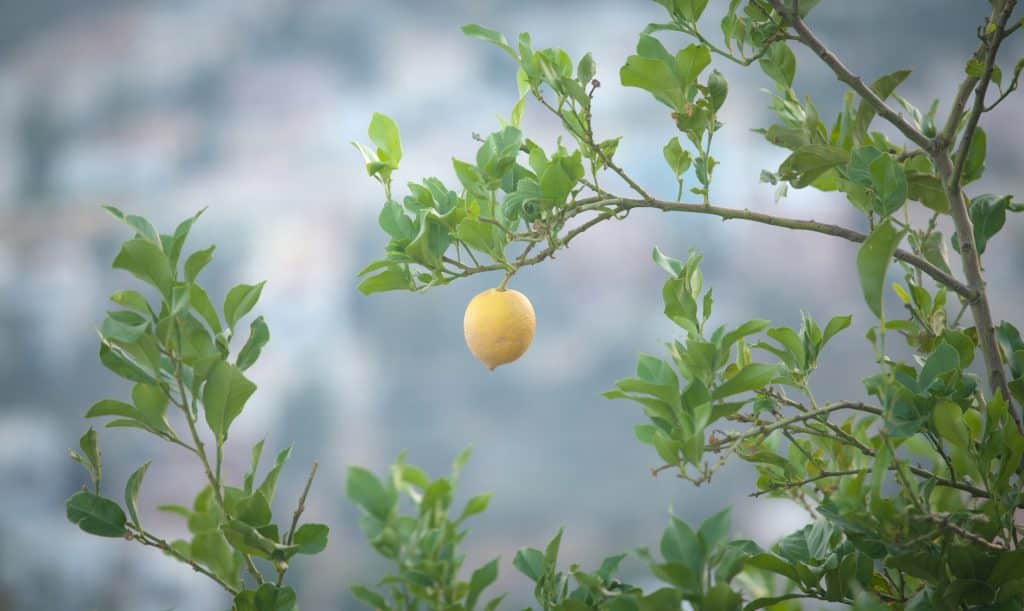Making lemonade out of (cold climate) lemons!
No matter how expensive the bottled lemon juice is or how easy it is to pick it up at the local market, there is nothing like having a freshly squeezed lemon on hand. Lemon juice is a kitchen chameleon-like no other, from baking to fish there is nothing like the flavor pop lemon adds to your favorite dishes.
Lemon trees are hardy and provide an overabundance of fruit in warmer climates but when faced with even the slightest frost will almost certainly die. Seasonal gardeners now have the option to enjoy citrus fruit year-round by investing in dwarf trees that thrive in containers, enjoying both the warm days of summer than packing up and moving inside for the winter.
As intimidating as it sounds, going from planting to harvesting can happen in as little as a year!
Choosing the right Lemon Tree
While not prohibitively expensive, investing in a dwarf lemon (or lime or orange or any other tropical fruit) tree can get pricy. A little internet searching combine with some do’s and don’ts can go a long way. Ranging in price from $30.00 to $200.00, planning ahead can save you a lot of time and lemon heartbreak.
The most common dwarf varieties are Improved Meyer and Dwarf Lisbon and there are pretty significant differences depending on what you are looking for. Lisbon lemons are knows for their smooth, thinner skin and not having seeds. Lisbon lemons contain more juice than many other varieties but if you are looking for a mild taste may not be for you. Improved Meyer, while technically NOT a true lemon, packs in great lemon flavor but is less acidic and much less bitter.
If you are looking to bake or infuse lemon zest into dishes Lisbon may be the way to go but for my money Meyer is an easy choice and resounding crowd pleaser.
Bringing home the tree – next step!
This “watched pot” producer requires a lot of patience. Your first year of tending this tree is more about cultivating a strong foundation than baking a lemon meringue pie. More than likely, you won’t even get a blossom that first year but don’t give up. These little wonders need some time to get used to their new owners and surroundings. Make sure to plant in a large container with plenty of soil and fertilizer with plenty of drainages built-in.

Make sure to place the container/pot in a very sunny spot and if you need to, support the trunk and branches, the trees are dwarves but the lemons will be just as big as the market-bought lemons if you are on your lemon game. It may feel right to water your tree to soaking but these little guys aren’t in for a swim. In hot summer months, water daily to approximately six inches deep, stopping when the water drains out of the pot. Back off the watering in winter to give your lemon tree the much-needed rest it deserves.
Keeping in mind lemon trees and cold do not mix, move your tree indoors at the first sign of frost. These trees thrive in a cool dark room with less water and consistent temperatures but won’t do a lot of fruit production during the quieter colder months. As lemon tree leaves can be poisonous to house pets, please be sure to research and plan before adding a lemon tree to your pet’s life.
Time to enjoy your lemons
When the day finally comes to move your dwarf lemon tree back outside, start preparing your neighbors for the endless lemonade stand you will be able to host. When the warm sun and long days finally hit this sleepy tree, the transformation is truly something to see. If you haven’t smelled lemon blossoms before, stop what you are doing right now and find one. The intoxicating aroma gives way to baby lemons of green in no time flat so take advantage of the lemon air early and often. In less than a month from storage to summer, this tree is already producing more than 20 lemons and has been here for just over a year.
This year-round commitment to a small tree with a lot to give is not for everyone and moving even a dwarf tree can be a lot, but when you think of all of the amazing summer and beyond dishes, your lemons can enhance, the commitment will be more than worth it!

ABOUT THE AUTHOR
Amy Meinhardt grew up gardening but not by choice. Her parents were born in the post-Great Depression generation, they grew and canned literally everything (we have an annual family reunion with our 100 plus cousins just to make Sauerkraut). Every day from May to October was spent weeding, canning, and pickling. If someone had told her that she was going to not only garden as an adult but weirdly learn to love it, she would have fallen over laughing. Cooking is her true love but buying herbs at the store is so expensive and doesn’t even last a day. For Mother’s Day one year, her husband and kids built her a raised herb box to grew her own herbs, and a new love was born. Amy loves gardening, so much so that rather than sit by the lake she lives on, she sits by her plants. Cooking with her herbs and vegetables usually includes skipping to the herb garden then making everyone in the house smell everything she brings in.
When she’s not gardening, Amy runs a non-profit serving family in need, volunteering at a no-kill animal shelter with her kids and husband, and buying books. Amy checks in on her 85-year-old parents daily and usually can’t reach them by phone because they are in their garden

Gardenize helps you keep track of your lemon tree
Gardenize App’s features help nurture your lemon tree endeavor by helping to track both growing and dormant season, sharing with fellow gardeners, and sharing your successes and experiences with others in the Gardenize community! Even before you commit to your dwarf lemon tree, you can tap into an already established growing community.
More from Gardenize
Images published on the Gardenize website belong to Gardenize AB and may not be used without permission.



